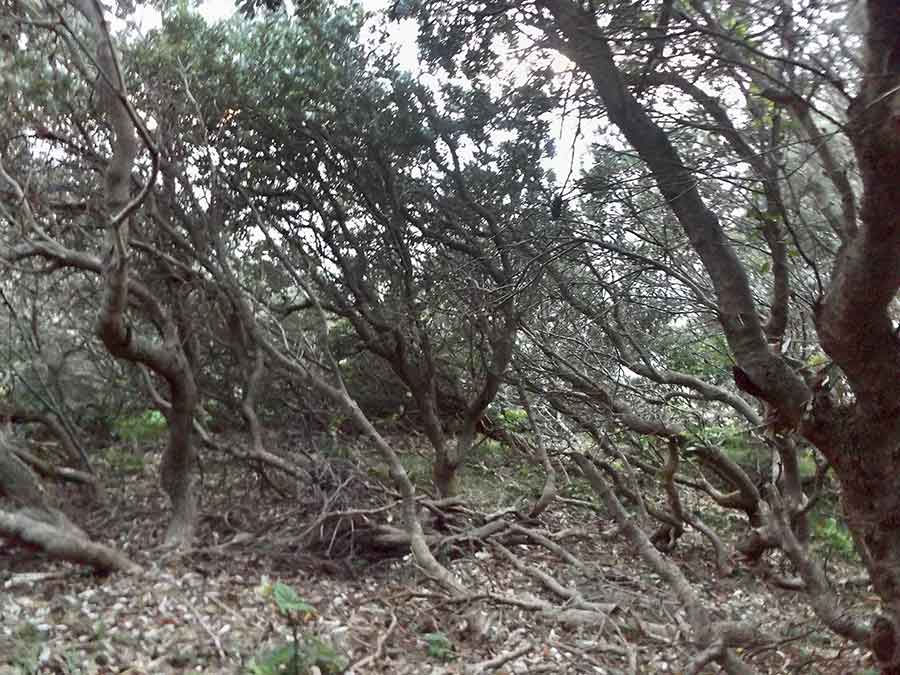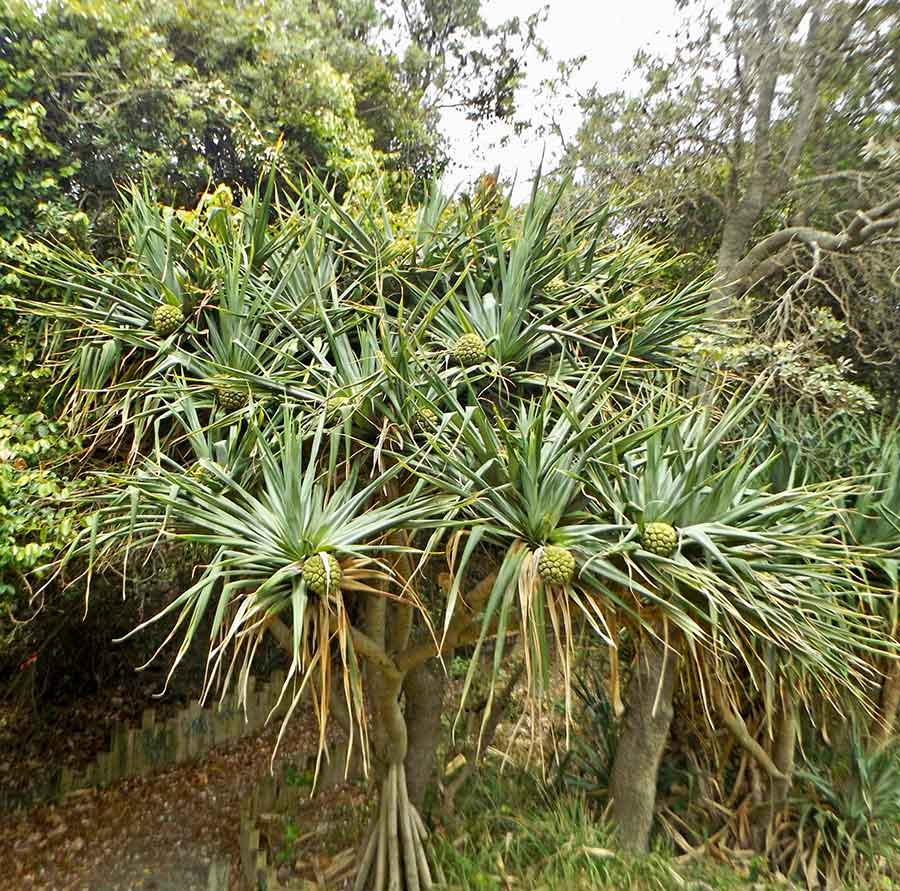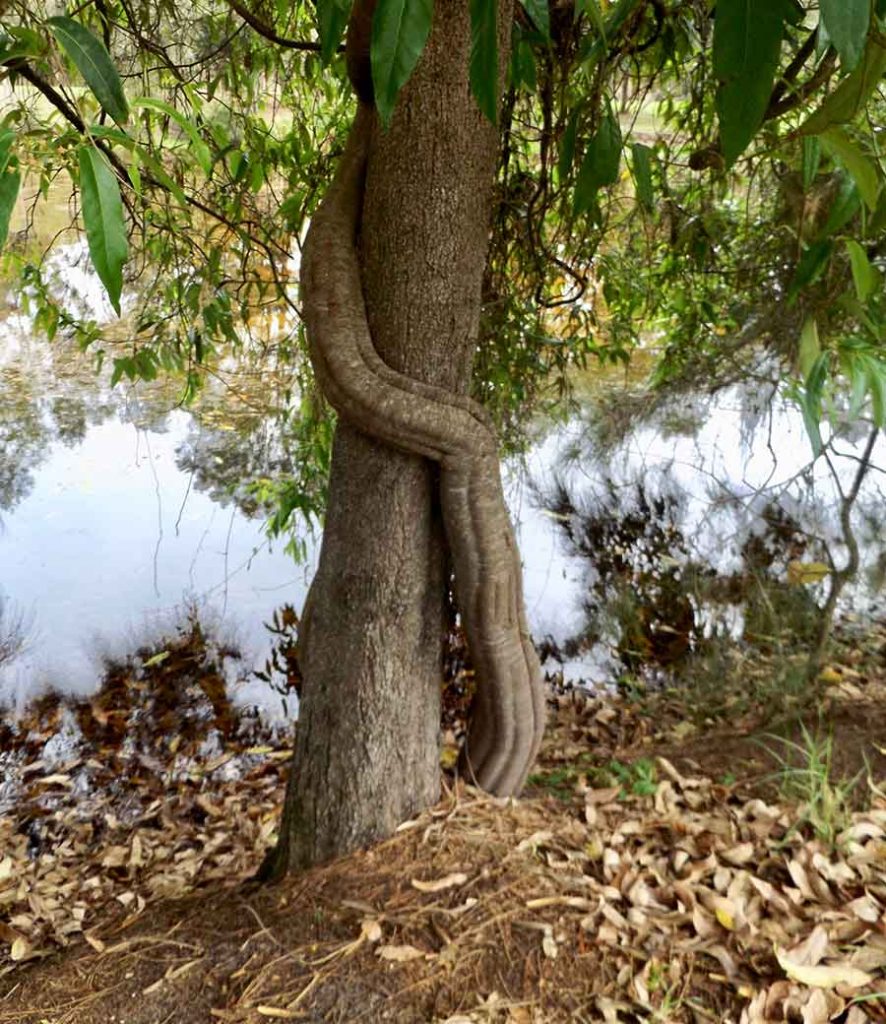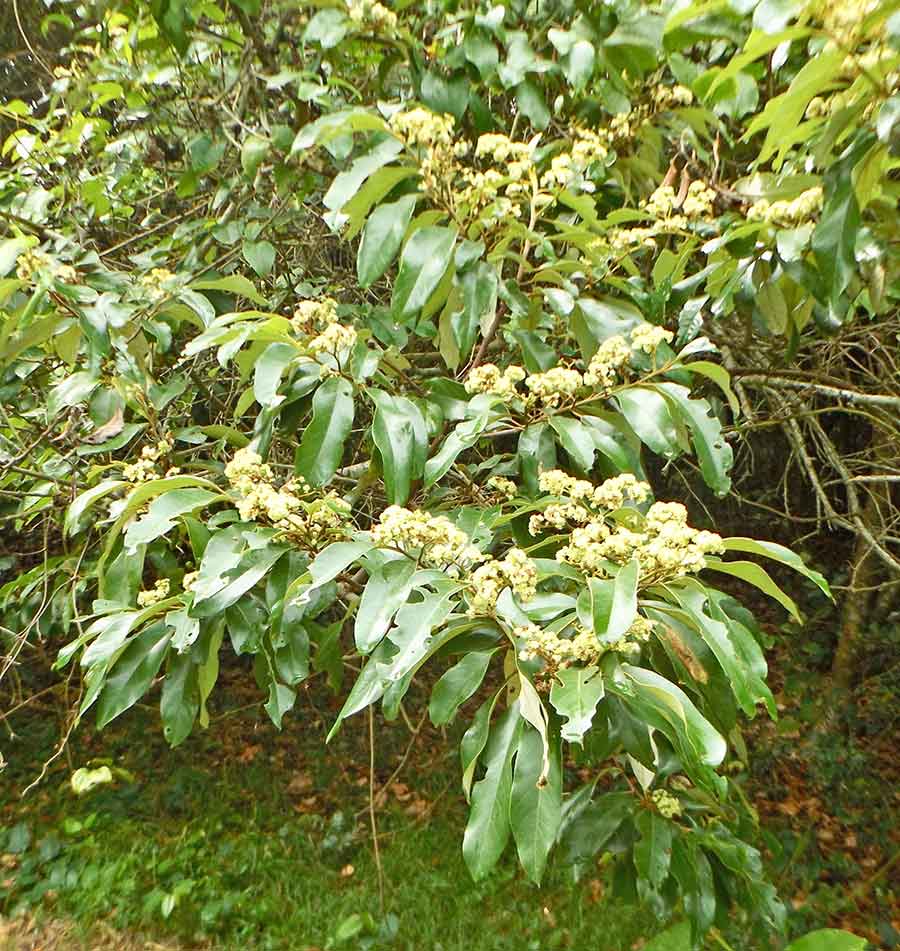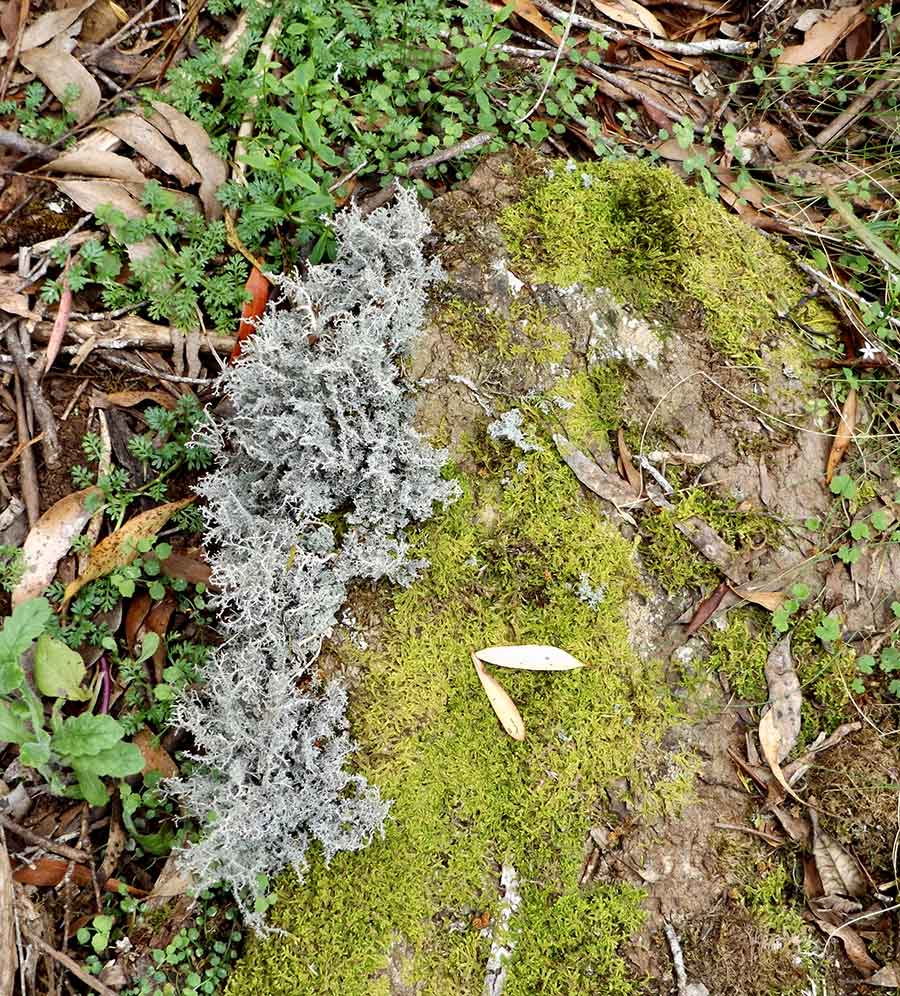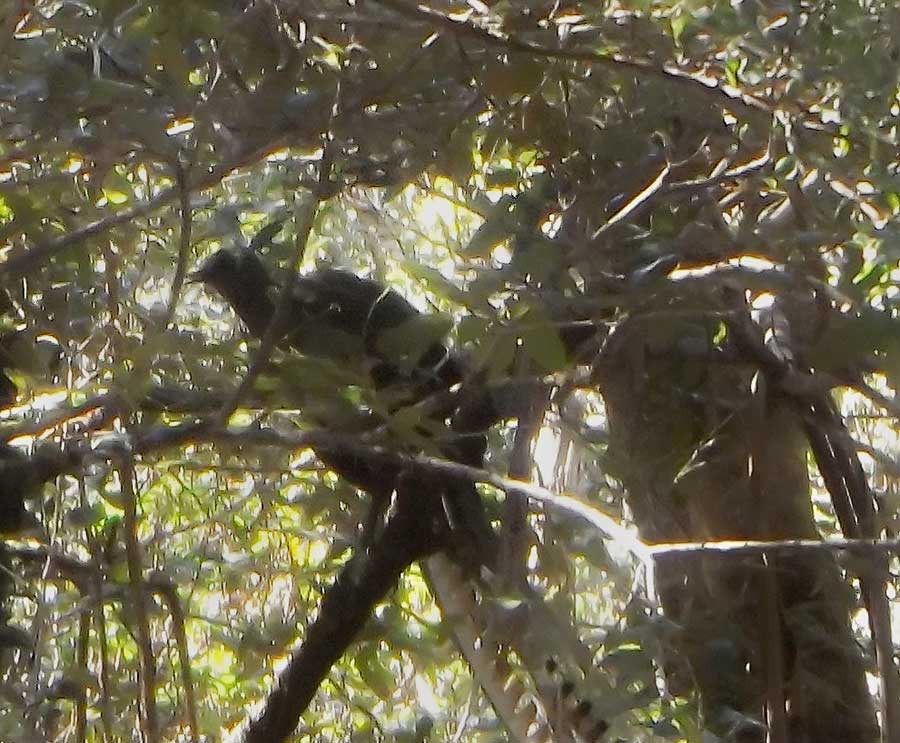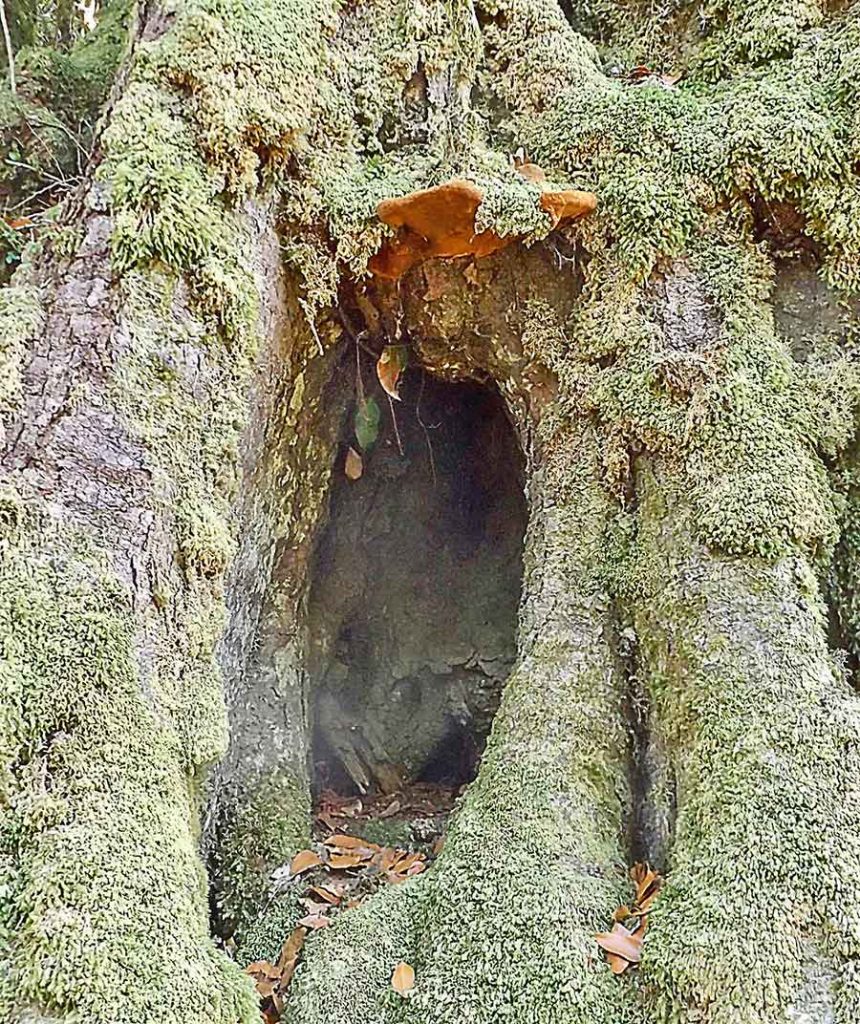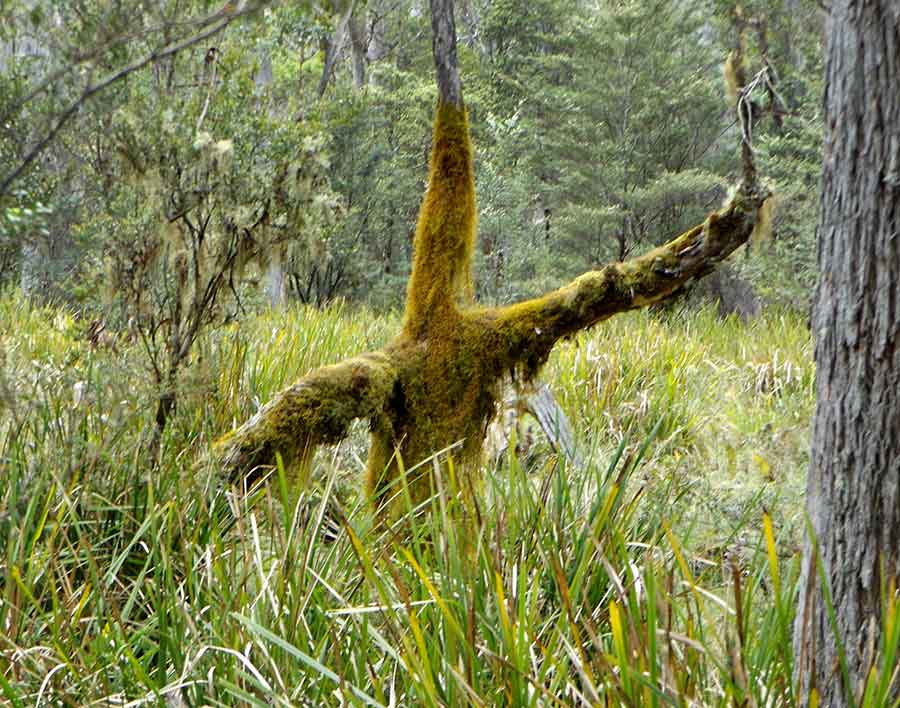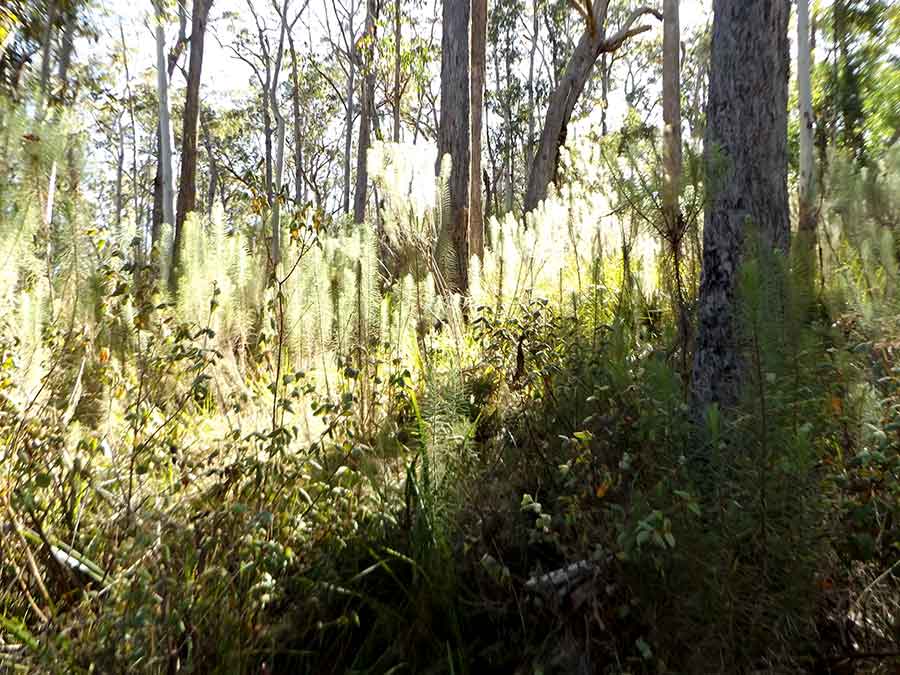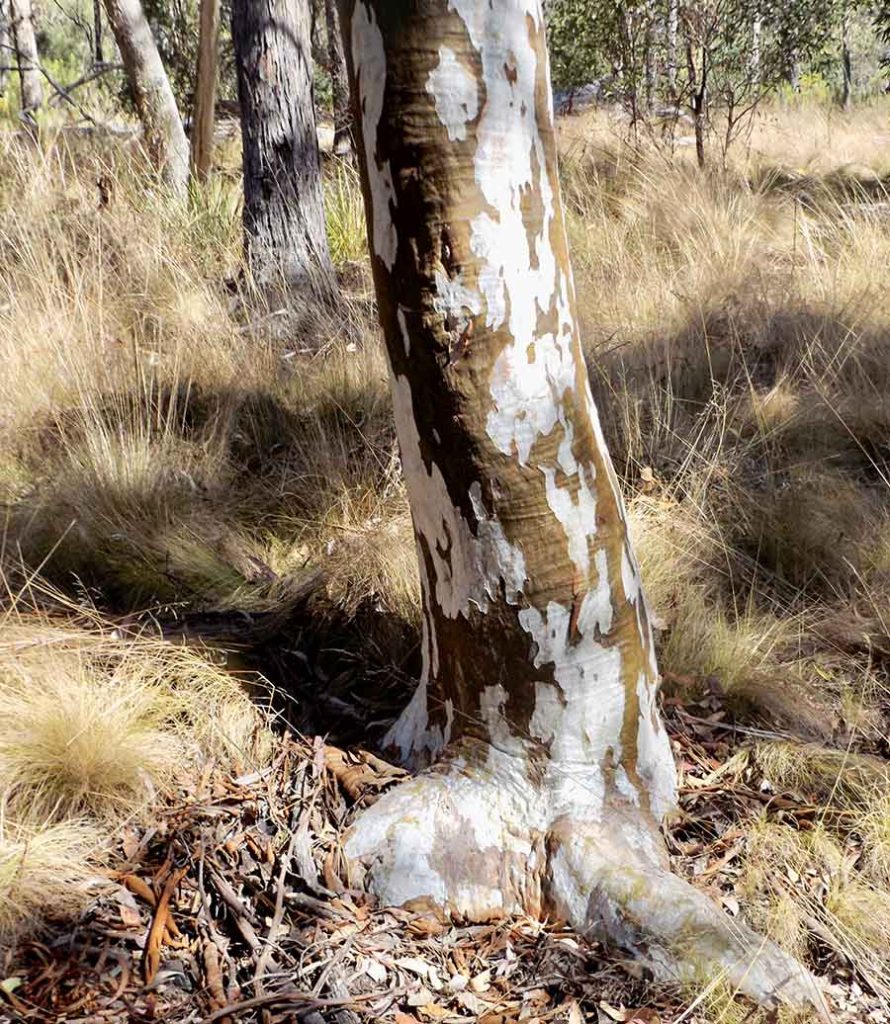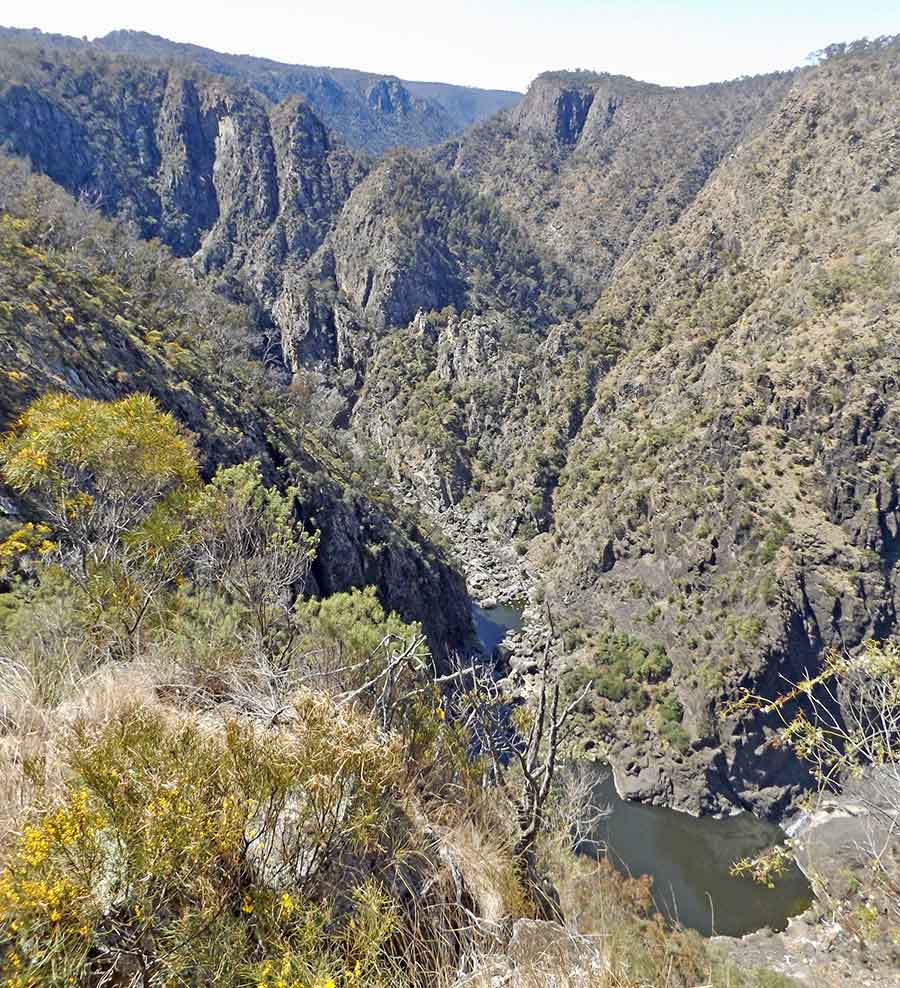I thought I was looking at gum tree leaves, but in fact it is a wattle — Acacia implexa.
No flowers or seed pods to give me a clue, but what’s in a name with such beautiful leaves?

This decorative and dangly foliage also belongs to a wattle — Acacia vestita.

The weird and wonderful triangular leaves on this wattle caught my eye: Acacia cultriformis. New to me.

Not a wattle, but a standout in its solitude as it erupted amongst crackly lichen, is this small shrub of Western Urn Heath, Melichinus erubescens.

On the ridge top, somehow growing tall and strong amongst rocks, this tree trunk, strikingly silver and grey, presented a single elephantine foot and proud wrinkles as it branched. I am told by my knowledgeable hosts that it is a Scribbly Gum, Eucalyptus rossi.

And if a tree does not choose to have a grey or brown trunk, it can opt for green, with a little help from friendly lichen.

For here the realm of green above all belongs to the mosses and lichens, especially after a good rainy period.
They make a fabulous contrast with the bones of this country — the rocks.









